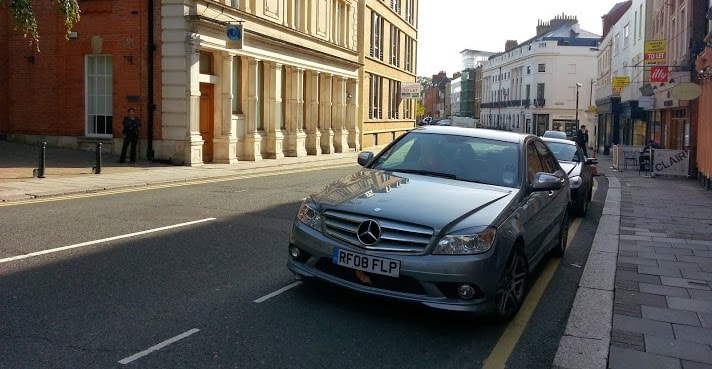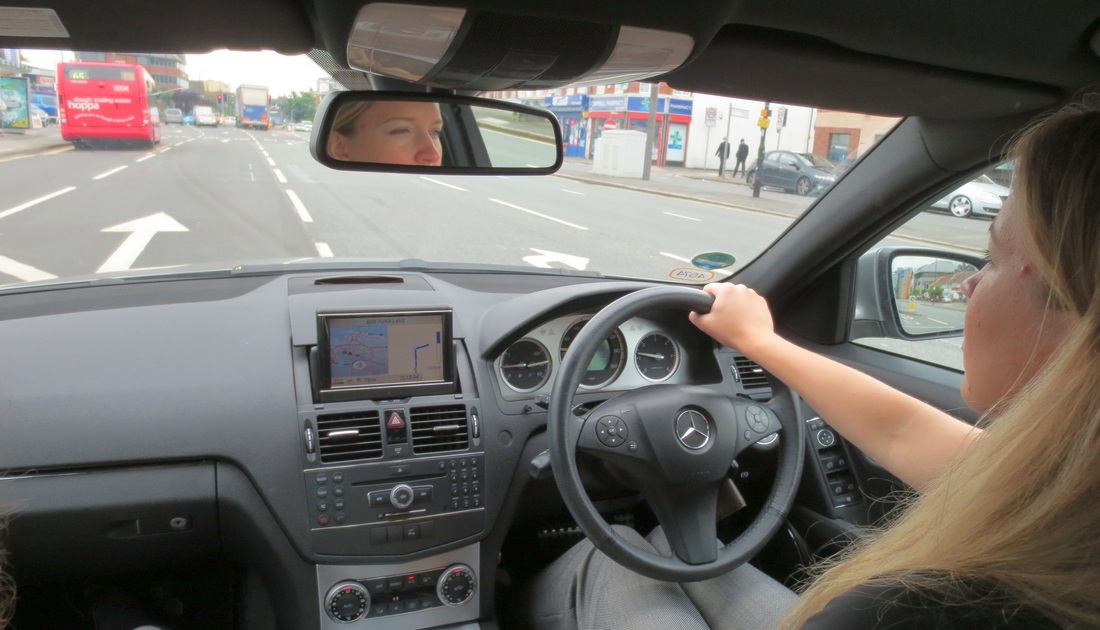Pass Practical Driving Test
Step-by-step guide to make sure you're ready to pass the DVSA's car practical driving test.
- Driving Course Online
- How to find instructor
- Apply for Your Test
- Driving Course Online
- How to find instructor
- Apply for Your Test
You must pass the DVSA theory test before you can book the practical driving test. In the beginning of the practical driving part of your test, you’ll have an eyesight check and be asked 2 vehicle safety "show me, tell me" questions.
"Show me, tell me" questions >>
Find your nearest driving instructor >>
Documents you need to take to your exam>>
How Do I Book My Practical Driving Test?
Make sure you have your provisional licence and theory test pass certificate to hand and you can:
Book online here >>
Telephone: 0300 200 1122 (English bookings), 0300 200 1188 (English enquiries), 0300 200 1133 (Welsh bookings) Textphone: 0300 200 1166
Fax: 0300 200 1177
Monday to Friday, 8am to 4pm
This is a step-by-step guide to make sure you're ready to pass the DVSA's car practical driving test.
About Eyesight Check before Practical Driving Test
You must be able to read (with glasses or contact lenses, if necessary) a car number plate from 20 metres. If you can’t pass the eyesight test you’ll fail your driving test and the test won’t continue.
If you have difficulty with spoken English you are permitted to write down what you see.
You must wear glasses or contact lenses every time you drive if you need them.
If you have difficulty with spoken English you are permitted to write down what you see.
You must wear glasses or contact lenses every time you drive if you need them.
The car practical driving test
The test will last about 38 to 40 minutes and will include about 20 minutes of independent driving and various roads and traffic conditions. Examiner will ask you to complete one manoeuvre and you may carry out an emergency stop. The sort of things you’ve been practising with your instructor or accompanying driver.
The driving test is straightforward and has been designed to see if you:
- can drive safely in different road and traffic conditions
- know The Highway Code and can show this through your driving ability
As long as you show the standard required, you'll pass your driving test. There are no pass or fail quotas.
Practical test in bad weather conditions
The driving ability part of your driving test
The driving part of your test will last about 40 minutes. Throughout the test your examiner will be looking for an overall safe standard of driving.
Your general driving ability
During your test the examiner will give you directions which you should follow. You'll drive in various road and traffic conditions. You should drive in the way your instructor has trained you.
You might also be asked to carry out an emergency stop.
Your ability to reverse your vehicle safely
You'll be asked to complete an exercise to show how well you can reverse your vehicle. The examiner will choose one exercise from:
- reversing around a corner
- turning in the road
- reverse parking - either into a parking bay, or parallel parking at the side of the road
Show Me Tell Me Questions
Before you start the practical driving part of your test, you’ll have an eyesight check. You will and be asked 2 vehicle safety questions during the test. The questions are known as "show me, tell me" questions. Answer any of these two questions incorrectly and you will gain one driving test fault.
You’ll be asked the:
You’ll be asked the:
- ‘tell me’ question (where you explain how you’d carry out a safety task) at the start of your test, before you start driving
- ‘show me’ question (where you show how you’d carry out a safety task) while you’re driving - for example, showing how to wash the windscreen using the car controls and wipers
Independent driving section of the driving test
The examiner will ask you pupil to pull over before starting the independent driving part of the test. At this point, the examiner will select and start the route if using a sat nav.
Here’s the instruction examiners will give when starting the independent driving part of the test with a sat nav.
“Shortly I’d like you to drive for some distance independently. I’d like you to follow a series of directions from the sat nav please. Continue to follow the sat nav until I tell you otherwise. Drive on when you’re ready.”
One in 5 tests will be following traffic signs, and not directions from a sat nav. The instruction given for these will still be as follows.
“Shortly, I’d like you to drive for some distance independently. I’d like you to follow the traffic signs for [location] please. Continue to follow the signs until I tell you otherwise. Drive on when you’re ready.”
During this part of the test, you have to drive without turn-by-turn directions from the driving examiner.
Your driving test will include around twenty minutes of independent driving. This is designed to assess your ability to drive safely while making decisions independently. Candidates will be asked vehicle safety questions while driving - for example how to use the rear heated screen.
Candidates can be asked to follow directions on a satnav as an alternative to following road signs - the examiner will decide. If a satnav is being used, it will be one supplied by the examiner. You won’t need to set the route - the examiner will do this for you. You can’t follow directions from your own sat nav during the test - you have to use the one supplied by the examiner.
You’ll be able to ask the examiner for confirmation of where you’re going if you’re not sure. It won’t matter if you go the wrong way unless you make a fault while doing it.
One in 5 driving tests won’t use a sat nav. You’ll need to follow traffic signs instead.
If you make a mistake, don't worry about it as it might be a less serious driving fault and might not affect your result. However, if at any time your examiner considers your driving to be a danger to other road users, they will abandon your test.
Parking in a bay
Examiner can use a wide variety of car parks for the bay parking exercise, such as hotels, retail parks and supermarkets.
The examiner will ask you to park in a bay - either driving in and reversing out, or reversing in and driving out (the examiner will tell you which).
You doesn’t need to park in a bay where there are vehicles in adjacent bays.
You can’t drive through a first parking bay, and then park in a bay directly in front of that. When they reverse out, they can’t go into any bays behind them.
The examiner will ask you to park in a bay - either driving in and reversing out, or reversing in and driving out (the examiner will tell you which).
You doesn’t need to park in a bay where there are vehicles in adjacent bays.
You can’t drive through a first parking bay, and then park in a bay directly in front of that. When they reverse out, they can’t go into any bays behind them.
Here’s the instruction you'll get to drive forward into a parking bay.
“I’d like you to drive forward into a convenient parking bay finishing within the lines, either to the left or the right (if the car park allows it).
“Now, I’d like you to reverse out either to the left or the right (if the car park allows it).”
3 possible reversing manoeuvres
You’ll be asked to do one of 3 possible reversing manoeuvres:
Official DVSA guide to how the 'parking in a bay' manoeuvre works in the driving test
- parallel park at the side of the road
- park in a bay - either driving in and reversing out, or reversing in and driving out (the examiner will tell you which you have to do)
- pull up on the right-hand side of the road, reverse for 2 car lengths and rejoin the traffic
Official DVSA guide to how the 'parking in a bay' manoeuvre works in the driving test
The driving test pass mark
The pass mark is no more than 15 driving faults and no serious or dangerous faults.
You can download Driving Test Report Form
When driving tests are cancelled or abandoned
Sometimes the DVSA has to cancel or stop driving tests because of things like bad weather or vehicle problems. The examiner will instruct you on how to deal with your test if it's been cancelled or stopped.
Change the date of your practical driving test
Driving Theory Test by DVSA
You can take your instructor on your driving test.
You can download Driving Test Report Form
When driving tests are cancelled or abandoned
Sometimes the DVSA has to cancel or stop driving tests because of things like bad weather or vehicle problems. The examiner will instruct you on how to deal with your test if it's been cancelled or stopped.
Change the date of your practical driving test
Driving Theory Test by DVSA
You can take your instructor on your driving test.
You don’t have to wait for the licence to arrive. You can start driving on your own straight away after you pass your driving test.
DRIVING LESSONS ONLINE - that will save you £'s on learning to drive! Start here >>
DRIVING LESSONS ONLINE - that will save you £'s on learning to drive! Start here >>
Motorcycle driving test
Motorcycle test 2018: official DVSA guide
Find out about:
• booking your test
• what to take to your test
• motorcycles you can use
• what happens during module 1
• what happens during module 2
• driving test faults and your result
• if your test is cancelled or there's bad weather
• if you have a disability, health condition or learning difficulty
Find out about:
• booking your test
• what to take to your test
• motorcycles you can use
• what happens during module 1
• what happens during module 2
• driving test faults and your result
• if your test is cancelled or there's bad weather
• if you have a disability, health condition or learning difficulty


